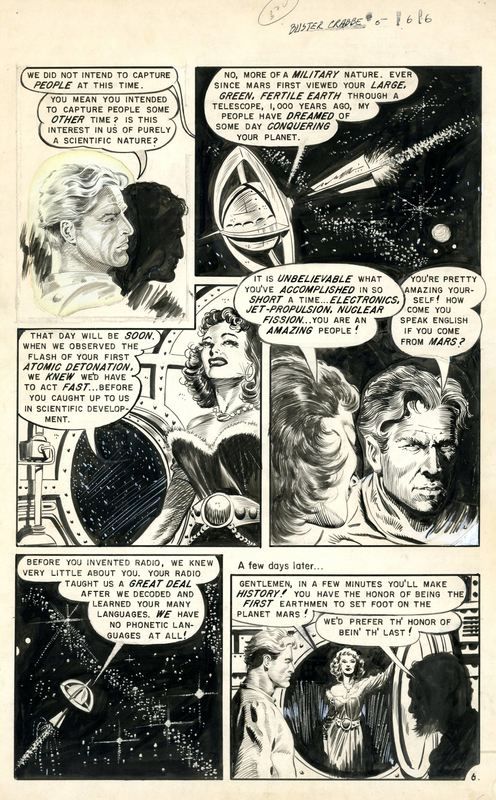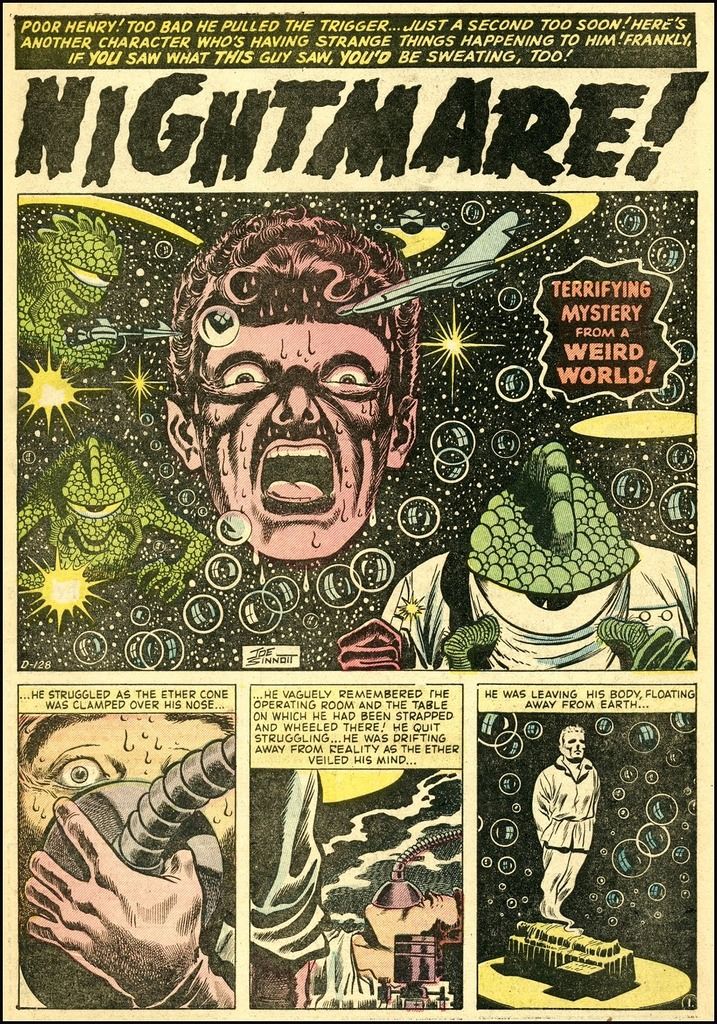|
|
Post by kirby101 on May 12, 2017 13:49:05 GMT -5
Adams-Giordano is hard to beat.  |
|
|
|
Post by berkley on May 12, 2017 13:54:12 GMT -5
I can't remember who I put as #1 in my list back then but I'm pretty sure that apart from some of the teams already mentioned these would have been included:
Kirby + Sinnott on the FF
Gene Colan + Steve Leialoha on HtD
Michael Golden + Russ Heath on Mister Miracle
J. Buscema + George Klein on the Avengers
might add some samples later, or some other names as they occur to me.
|
|
|
|
Post by kirby101 on May 12, 2017 13:54:21 GMT -5
Several of my favorites have been mentioned. I'll add Neal Adams/Tom Palmer and Jack Kirby/Mike Royer. I am always torn between Kirby / Royer  And Kirby / Sinnott  |
|
|
|
Post by brutalis on May 12, 2017 14:46:13 GMT -5
So many wonderful combinations to even try and mention them all.
Ones that stick out in my memories of youthful comic book searches knowing that they would never let me down:
Kirby/Colletta on Thor
Kirby/Sinnott on FF
Byrne/Austin on X-Men
Perez/Marcos on Avengers
J. Buscema/Alcala/Dezuniga/Chan on Conan
J. Buscema/Palmer on Avengers
Colan/Palmer on Dracula
Kane/Romita on Spider-Man
Andru/Esposito on Spider-Man and everything they did together
S. Buscema/Mooney on anything
Trimpe/Severin on Hulk
Miller/Janson on Daredevil
JRjr/Layton on Iron Man
Swan/Anderson on Superman
Infantino/Anderson on Adam Strange ad Flash
Davis/Farmer on everything they work on together
Dillin/McLaughlin on JLA
Novick/McLaughlin on Batman
|
|
|
|
Post by Phil Maurice on May 12, 2017 17:02:53 GMT -5
Kirby / Wood Skymasters:  Williamson / Frazetta Williamson / Frazetta: 
|
|
|
|
Post by Phil Maurice on May 12, 2017 19:10:18 GMT -5
So here's a question for the board's scholars.
Maybe my premise is flawed, but as near as I can tell, many (most?) Golden Age artists penciled AND inked their own work. When and why did the specialization and separation of those duties occur? I can see that a sort of assembly-line approach would be more efficient, but I imagine there must have been resistance from artists who were used to seeing a job through to the end. Or maybe not.
I'm truly ignorant when it comes to this topic. Did it evolve organically or did some visionary publisher see the economic advantage of this practice?
|
|
|
|
Post by Icctrombone on May 12, 2017 20:13:20 GMT -5
So here's a question for the board's scholars. Maybe my premise is flawed, but as near as I can tell, many (most?) Golden Age artists penciled AND inked their own work. When and why did the specialization and separation of those duties occur? I can see that a sort of assembly-line approach would be more efficient, but I imagine there must have been resistance from artists who were used to seeing a job through to the end. Or maybe not. I'm truly ignorant when it comes to this topic. Did it evolve organically or did some visionary publisher see the economic advantage of this practice? Have no idea but I'm guessing it had to do with getting more money for the pencilers. Man, Kirby and John Buscema could churn out 3 penciled books a month. That means 3 paychecks. |
|
|
|
Post by Icctrombone on May 12, 2017 20:15:07 GMT -5
Here's a question - Was there any time that a Tom Palmer collaboration looked bad? Or a Joe Sinnott?
|
|
|
|
Post by Phil Maurice on May 12, 2017 20:38:49 GMT -5
Here's a question - Was there any time that a Tom Palmer collaboration looked bad? Or a Joe Sinnott? Sinnott didn't need collaborators, as this page from Adventures Into Weird Worlds #25 clearly shows:  So, was he simply more comfortable as an inker? Was it a role that was thrust upon him? Enquiring minds want to know!  |
|
|
|
Post by codystarbuck on May 12, 2017 21:05:41 GMT -5
So here's a question for the board's scholars. Maybe my premise is flawed, but as near as I can tell, many (most?) Golden Age artists penciled AND inked their own work. When and why did the specialization and separation of those duties occur? I can see that a sort of assembly-line approach would be more efficient, but I imagine there must have been resistance from artists who were used to seeing a job through to the end. Or maybe not. I'm truly ignorant when it comes to this topic. Did it evolve organically or did some visionary publisher see the economic advantage of this practice? I get the impression that some of the shops had people pencilling and inking separately, though I don't have any concrete evidence. Most stories in the Golden Age were maybe 8 to 10 pages; so, it was easier for a GA artist to do everything. I suspect the longer stories of the Silver Age necessitated it, to meet deadlines. |
|
|
|
Post by codystarbuck on May 12, 2017 21:08:57 GMT -5
More for me:
Mike Mignola and P Craig Russell
John Romita JR and Bob Layton
Dick Ayers and John Severin
|
|
|
|
Post by kirby101 on May 12, 2017 21:26:38 GMT -5
Well Simon and Kirby shared penciling and inking.
By the Silver Age it was usual for the separate chores.
EC mostly pencil and ink by the same artist. By the time Silver Age Superheroes were here, it was mostly differnt people doing each.
|
|
|
|
Post by Phil Maurice on May 12, 2017 21:36:26 GMT -5
By the time Silver Age Superheroes were here, it was mostly different people doing each. So you posit that the publishing model (Superheroes) drove the separation of labor? That's interesting. I hadn't considered that. |
|
|
|
Post by Cei-U! on May 13, 2017 0:06:59 GMT -5
So here's a question for the board's scholars. Maybe my premise is flawed, but as near as I can tell, many (most?) Golden Age artists penciled AND inked their own work. When and why did the specialization and separation of those duties occur? I can see that a sort of assembly-line approach would be more efficient, but I imagine there must have been resistance from artists who were used to seeing a job through to the end. Or maybe not. I'm truly ignorant when it comes to this topic. Did it evolve organically or did some visionary publisher see the economic advantage of this practice? Most Golden Age artists did *not* ink their own pencils. You had to be a top talent like Lou Fine, Jack Burnley, or Bill Everett for a publisher or packaging service to even consider it, and even they often had others penciling their backgrounds and inking secondary figures. If you were a lesser talent or were learning on the job, you worked from layouts by their studio's art director (somebody with a strong sense of visual storytelling like Jack Binder or Will Eisner) or were assigned a specific task--backgrounds, airplanes, sound effects lettering--and that's all you did, working on whatever page was set on your drawing table.It was quite literally an assembly line; production was everything in those days. Creativity and originality were beside the point. You were fast or you were unemployed, period. Cei-U! Hope that's helpful! |
|
|
|
Post by Deleted on May 13, 2017 0:40:43 GMT -5
Adams-Giordano is hard to beat.  Agreed. |
|